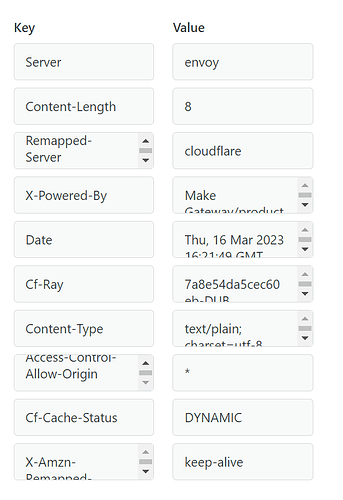Background
I am struggling to whitelist an IP address in Make.
![]() The steps you have taken
The steps you have taken
- Make does not offer an obvious way to see / log what requests were made to its wehbook module, so I have been using the https://webhook.site/ to determine the originating IP of the webhook I am trying to whitelist.
- When I leave the IP whitelisting box blank, I can see in the requesting app that the webhook was successful (
200 Accepted) - When I paste in the IP address I want to whitelist (having tried both verbatim and with a CIDR (
xxx.xxx.0.0/18)and then save the webhook; the subsequent call to the Make webhook fails.
There is an answer from @Bjorn.drivn on log IP addresses in make that mentions toggling on the Get request headers option to see where an IP address is coming from. So I tried:
- Blanking out the IP whitelist box completely
- Toggling the get request headers option
- Making a request
And looking for the cf-connecting-ip in the response headers in the originating app. However, all these show is the following:
There is no CF-connecting-ip field that I can see.
I am keen to try Make.com out for this integration, but hesitant to set up a wide-open line with no other form of security when the application is meant to be used for work.
I am new to setting up webhooks (I normally just call them ![]() ) so it might be the case of me making a dummy error. Any help would be really appreciated.
) so it might be the case of me making a dummy error. Any help would be really appreciated.
